This article is the second in a three-part series. The first article of the series explores the conflict between luxury and traditional ecommerce strategies. This second article talks about different luxury user groups, as well as their behaviors and shopping journey. The third article explores how luxury brands can provide a high-quality ecommerce experience while still adhering to inherent luxury values and principles
About Our Research
To investigate this phenomenon, we conducted a qualitative study involving 9 participants, in a mix of interviews and usability testing. These participants included:
- Customers who had just recently started purchasing luxury products
- Luxury fanatics who frequently bought products from their favorite brands
- Personal stylists who buy luxury goods for their wealthy clients
- A luxury consultant, who provides advice to high-profile luxury clients
As much as possible, we allowed our participants to bring their own tasks and choose their preferred sites and apps. For example, we observed participants who shopped for:
- A pair of Jimmy Choo heels
- A silk Hermès scarf
- A Chanel handbag
- A Louis Vuitton briefcase
- A Burberry coat
- A Cartier bracelet
- A Tiffany’s wedding band
- A BMW car
- A Rolex watch
- A pair of Golden Goose sneakers
- A luxury hotel room in Berlin
4 Types of Luxury Shoppers
In our study, we encountered four types of people who shop for luxury goods:
- Professional stylists
- Window shoppers
- Occasional splurgers
- Big spenders
These are high-level categories. Within each group, there are variations in characteristics or behaviors. Additionally, the same individual may be an occasional splurger for one product type or brand, but a big spender for others. For example, a wealthy lawyer may be a big spender when it comes to designer suits, but an occasional splurger on luxury cars.
Individuals can also move across categories over time. For example, someone who is not born wealthy but is fortunate enough to build substantial wealth over time may move from a window shopper, to an occasional splurger, to a big spender, and perhaps eventually to someone who can pay a professional stylist to buy luxury goods for them.
Professional Stylists
Professional stylists (also called personal shoppers) purchase luxury items on behalf of a client. They’re all business when it comes to luxury shopping — they’re familiar with the brands their clients favor, and they want to decide on items and purchase them quickly.
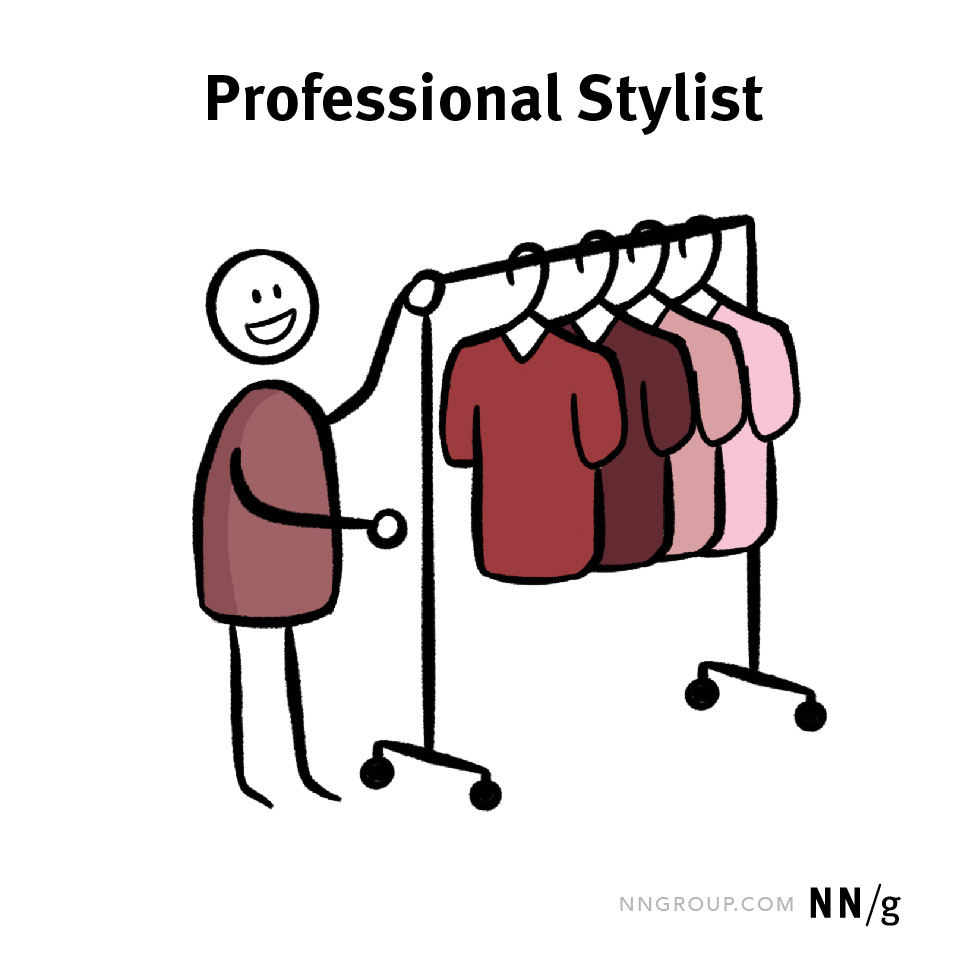
The stylists included in our study seldom used individual brand sites, preferring instead to use luxury-shopping platforms like Farfetch and Net-a-Porter. They frequently purchased many luxury goods to take to their clients and returned whatever their clients didn’t want.
Window Shoppers
Luxury brands sometimes have enormous fan bases composed of people who can’t afford to buy the products. Many of these are younger consumers who follow the brand and aspire to someday be able to buy its products.
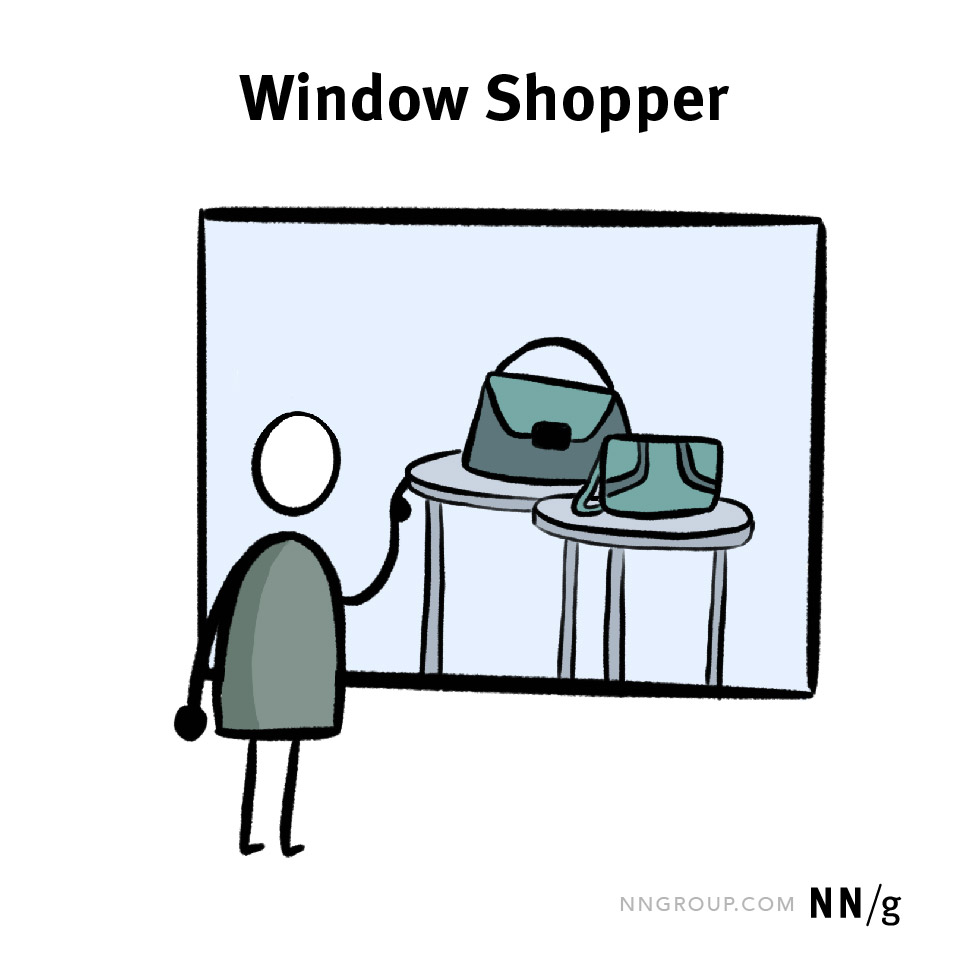
None of the participants in our study were window shoppers. (We intentionally recruited people who had purchased luxury items at least a few times in the past.) However, several of our participants reported that they had been fans of specific luxury brands long before they were able to afford them.
Occasional Splurgers
These shoppers buy a luxury item every now and then. For them, a luxury purchase — typically, a long-wearing, durable item like a bag — is an indulgence and an investment, sometimes intended to celebrate a special occasion.
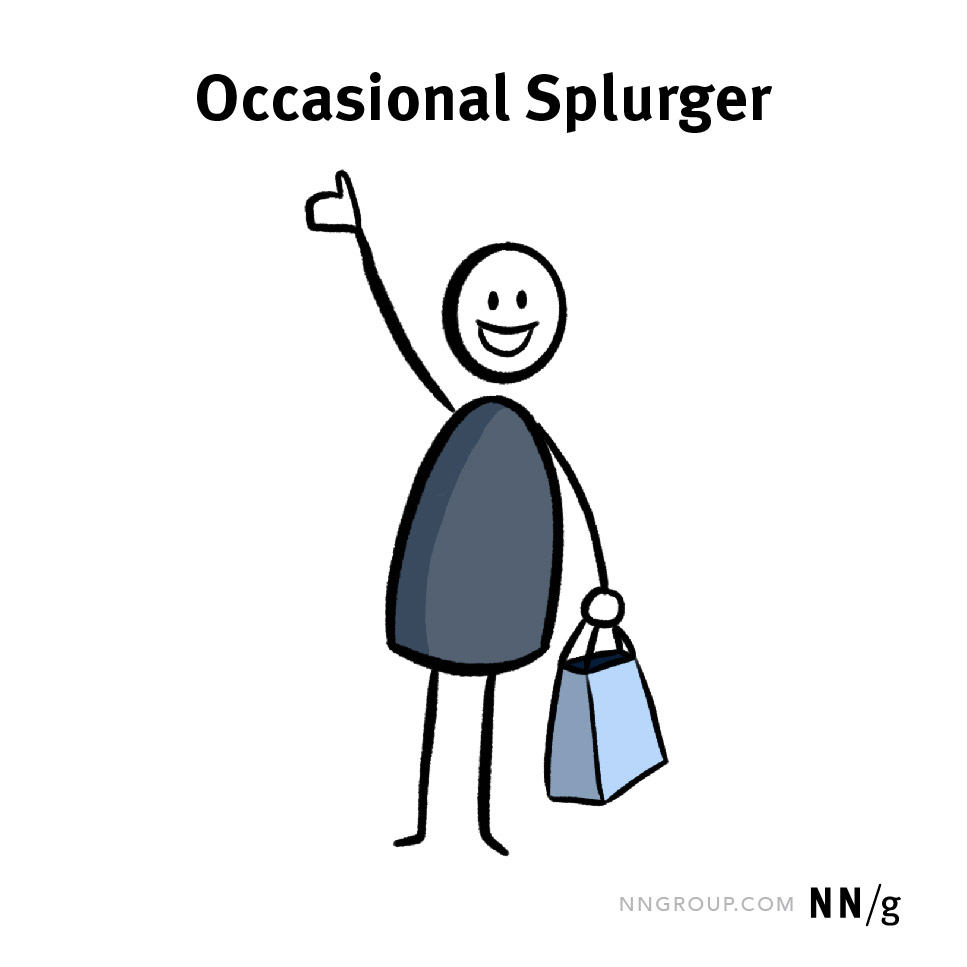
One occasional splurger told us that she viewed her luxury purchases as future family heirlooms:
“I don’t buy extra trendy pieces that I think may not be in fashion in a couple of decades. So, basically, things I can hopefully hand down to my future daughters.”
Another participant in this user group shopped for her first pair of Jimmy Choo shoes. She had been a fan of Jimmy Choo for a long time (a window shopper) and decided she would finally splurge on a pair for her wedding.
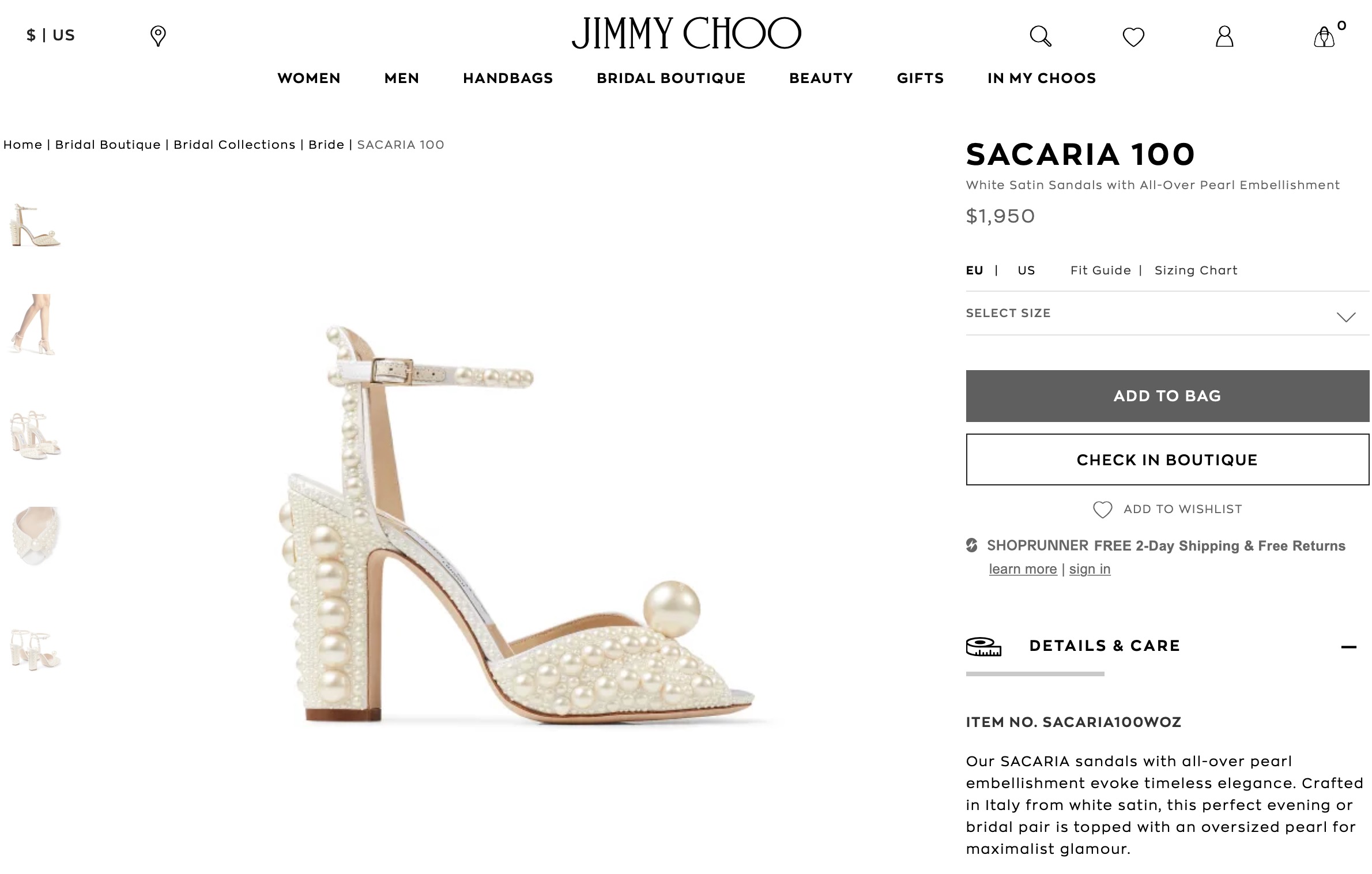
For these shoppers, an in-person visit to a luxury store is a special treat they enjoy and look forward to. For many, the in-person experience is as important as the item itself.
Big Spenders
Big spenders are habitual, frequent luxury shoppers. This type of shopper accounts for the majority of luxury sales. They buy many kinds of luxury goods and services and tend to have strong loyalty to multiple brands. One big spender in our study described her favorite brands for us:
“I love Chanel and Hermes. For shoes, Valentino is always classic, and Manolo Blahnik. For outerwear for business, I’ll buy Burberry. For something more functional, I’ll go for Canada Goose.”
These customers sometimes view luxury as a hobby or source of entertainment. Some of them build collections of specific items (for example, Rolex watches or rare Chanel purses).
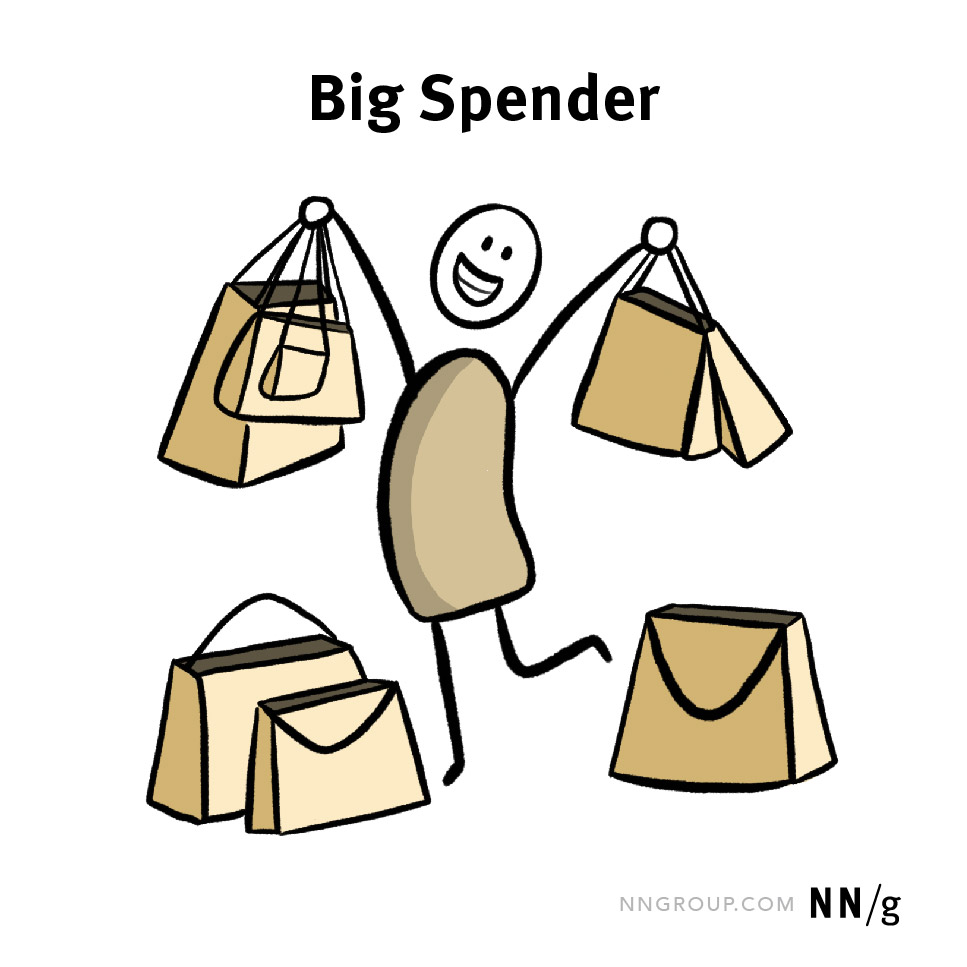
Brand Experts
Big spenders tend to be extremely familiar with the brands they love, including their product lines and the history of the brand. One big spender who treats luxury as a hobby said that she always researches the company’s leadership and history when she starts to become interested in the brand.
“I definitely like to look at the people and the history of a brand. I probably spend too much time doing that. If I’m getting sucked into a new brand, I’ll take time to look at it. I want to know what they’re about. It makes it more of a connection. Like, Tom Ford is really cool as a person, so I’m more likely to shop his stuff. So, I spend time looking at the history before I go look at the products.”
This is another key difference between luxury shopping and typical shopping. Most consumers wouldn’t take the time to read about a brand’s ethos and history before buy a $40 shirt, but luxury customers want to know the brand before they spend $1000 on a shirt.
This deep familiarity with the brand helps to explain why so many luxury retailers fail to provide important product details in their sites and apps (a frequent problem, analyzed in the next article). Limited information on digital channels (accompanied by high prices) acts as an entry barrier — an intentional way to restrict the customer base to only those who love the brand and have done the work of getting information about it and its products through other means.
For example, the website of French luxury retailer Maison Goyard does not provide any prices for its products, which can only be purchased by contacting the company or visiting a physical location. During our study, one big spender who was already very familiar with the brand quickly guessed that a certain Goyard bag would cost about $2,400. (I checked the price after the session — she was exactly right.)
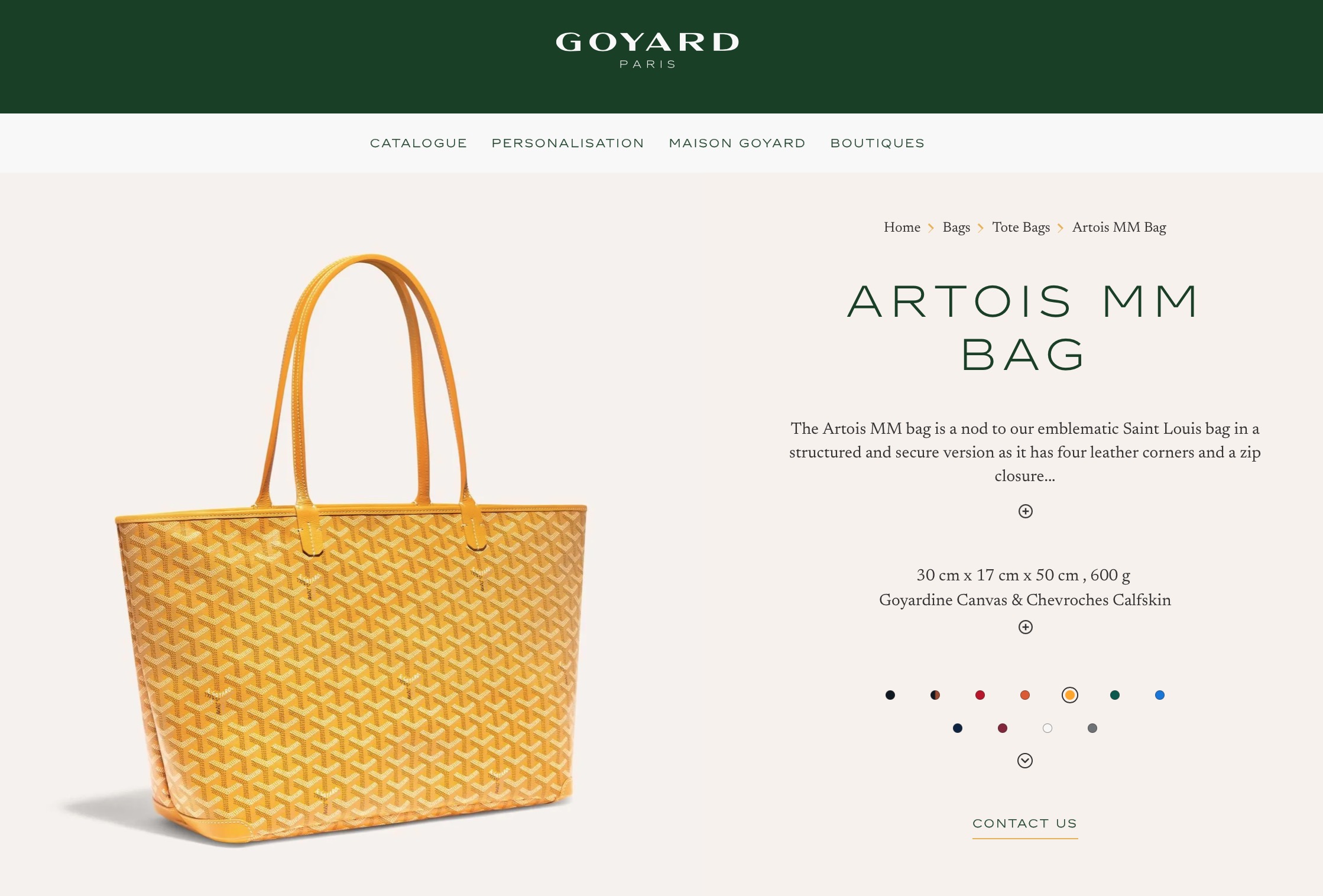
Relationship with the Brand: Stores and Sales Representatives
Some big spenders have dedicated sales representatives with their favorite brands, who help them to locate and buy special items not available to all customers. A big spender in our study described her close relationship with a Chanel sales representative. She met her representative in a Chanel store and keeps in touch with her via text messages:
“The person who’s gotten me the majority of the [Chanel] pieces that I have, she knows me. She knows about my life. It’s almost like you have a friend in the industry who’s recommending pieces. It’s a lot like a personal-stylist relationship. They get you access to things that are difficult to find, but they’ll also recommend things you wouldn’t know that you’d like. It kind of makes it a more connected experience, and, in a world where everything is at our fingertips, it makes it more special in that way. […] As much as possible, I try to get things from her. If I’m looking for a piece, I’ll ask her. She gives me access to things that have waiting lists.”
While a trip to a store may not be the rare treat it is for occasional splurgers, big spenders still appreciate and enjoy the experience. One big spender told us about his experiences at his favorite local luxury-jewelry shop, Bailey’s.
“I’m in Bailey’s a lot, buying wedding gifts and things. I know the people that work there, and they’re super helpful. They always greet me with champagne, which I love. It’s just that extra customer care, and it makes it a fun experience.”
Some big spenders reported receiving extra perks from the salespeople they’ve built relationships with. For example, free products, free expert repairs, and invitations to special events and parties.
The Luxury-Shopping Journey: Occasional Splurgers and Big Spenders
The following discussion focuses on the two main types of luxury shoppers: occasional splurgers and big spenders. As mentioned above, we did not include any window shoppers in our study, because we wanted to focus on people who have some experience with luxury purchases. Professional stylists shop for luxury goods as a major part of their jobs, so their needs and knowledge of the domain are highly specialized. They also tend to heavily rely on third-party sites to shop.
While occasional splurgers and big spenders differed in some key behaviors, their luxury-shopping journeys were similar and consisted of 4 phases:
- Discover
- Consider
- Purchase
- Use
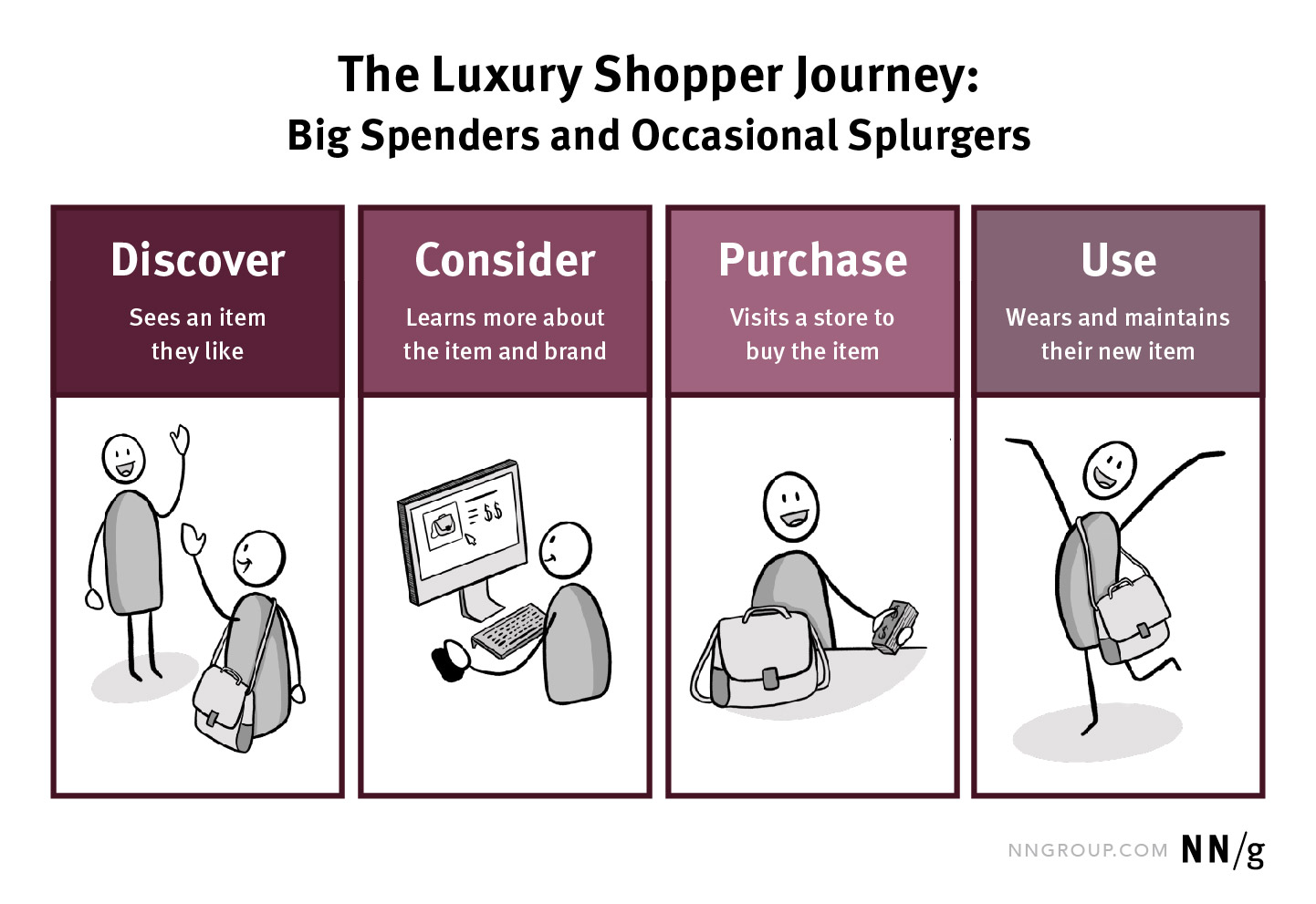

One major difference between occasional splurgers and big spenders was the frequency with which they shopped for luxury items — a big spender might go through the luxury-shopping journey nearly constantly, while an occasional splurger might go a year or more without a luxury purchase. Additionally, big spenders were likely to move through the purchase process more quickly than occasional splurgers.
Other key differences between these two user groups are discussed below.
1. Discover
Luxury shoppers often discovered products through social media or by noticing friends or strangers with an item they liked. Some frequently followed their favorite designers’ latest collections and discovered items from the runway.
Big spenders were more likely to become aware of a new product serendipitously — not by actively seeking out a specific product, but instead by stumbling upon something that struck their interest. Sometimes that happened during one of their frequent visits to luxury stores.
Occasional splurgers were more likely to decide that they wanted to invest in a certain a type of product (e.g., a bag) before beginning the search for the right item. They might also buy a luxury product to celebrate a special occasion (such as a wedding or promotion).
2. Consider
In this phase, luxury shoppers tried to learn about the product(s) that interested them and to decide which luxury product to buy. Because luxury shoppers often first discover products by seeing them (for example, on Instagram or on the runway), they’re faced with the immediate problem of trying to find out what that item’s name is (if it has one) and where they could buy it.
For both occasional splurgers and big spenders, this phase involved lots of research, primarily digital. They visited luxury-brand sites, luxury department stores’ sites, and luxury platforms like Net-a-Porter. They looked for reviews and asked friends about their experiences. Big spenders also sometimes reached out to their personal sales representatives if they already had a relationship with that luxury brand.
Along with the discovery phase, this was the longest phase in the journey. People don’t often “need” luxury products quickly, so most luxury shoppers want to take their time to decide. For example, one big spender told us:
“I saw this bag in the Louis Vuitton store, I’ve had my eye on it for a while. I just haven’t bought it yet. I just want to make sure that there isn’t anything else I should consider. I might buy it the next couple of months, maybe.”
Especially for occasional splurgers, these purchases often represent a significant investment, so customers want to be very sure that they considered all options and alternatives before making a decision. In contrast, a big spender with an ample budget who needs a specific item for an upcoming event, like a dress for a gala or a suitcase for a trip, might spend less time in this phase.
In our study, however, even big spenders considered luxury purchases carefully. One big spender who had her heart set on a specific Burberry coat added it to her cart on the Burberry site. Before checking out, she decided to explore the brand’s entire outwear collection just to make sure there wasn’t anything better. “If I’m going to buy one,” she said, “I want to see all the options.”
One occasional splurger was considering buying an expensive briefcase from Louis Vuitton but wanted to ensure it was the right choice.
“This bag is $3,200, that’s a pretty big purchase. I want to see this in person and touch it and feel it. Am I going to be able to put my Surface Pro and my iPad in there? Will they be protected? I don’t want to spend $3,200 on a bag that ends up not really being what I bought it for… But I do love this bag.”
Several luxury shoppers also reported feeling anxious about returns. Some said they just hated returning items in general, while others said they specifically hated having to return luxury items, because they represented such a big financial and emotional investment. One big spender who collected special-edition Chanel items said she didn’t like returns because she “didn’t like thinking about someone else getting it.” Some luxury retailers had ungenerous return policies (for example, Tom Ford only allowed returns within 14 days. Additionally, some shoppers worried that their very expensive items might get lost during shipping.
(Fear of returns was not a problem for the professional shoppers in our study — they purchased lots of options for their clients, knowing they’d need to return many of them.)
The Consider phase tended to be the low point in the luxury-shopping journey and it was where luxury brand sites often failed customers. Many of the sites we tested suffered from:
- Poor organization and information architecture: Participants struggled to find specific products as well as general product categories.
- Few photos of the product: Many participants complained about not being able to see models with the product to get a sense of its size and not being able to see all product details or angles.
- Confusing product names, attributes, and terminology: Several sites failed to explain and clarify the different products and their attributes.
- Missing product details: Participants wondered about product size, material, and styling.
- Bad product recommendations: Unlike the in-store experience, most of these sites provided unhelpful recommendations if at all.
- Sloppy UI design and bugs: Shoppers sometimes encountered embarrassing design or development mistakes.
Luxury shoppers tend to be highly motivated to buy, so they are often willing to work around these problems. When they encountered bad digital experiences, many participants said they would visit a store to see the product in person and ask questions.
However, these experiences did sometimes damage customers’ perception of the brands’ professionalism and attention to detail — qualities that luxury brands strive for. Additionally, we observed a few instances where customers were discouraged enough to give up shopping for that item — particularly if they didn’t live near a physical store. In some cases, they abandoned the offending brand and went to look at a competitor.
3. Purchase
This phase was often the high point for customers — after considering and exploring options, sometimes for months, they finally acquired the item they wanted. Participants reported that the experience of visiting a store or unboxing a beautifully wrapped package was elating.
The in-store purchase experience was particularly enjoyable. Participants reported being showered with attention and feeling special. Sales representatives were endlessly patient and helpful, willing to answer any question they might have. When they returned to a store they had visited in the past, the staff remembered details about them and their past purchases.
4. Use
Wearing and using these items brought satisfaction to luxury shoppers, but also some anxieties.
When someone wears or uses a luxury product, it acts as a signal to others who are “in the know” — in other words, people who recognize the financial and social status attached to the brand. Logos often play a major role in sending this signal.
Some luxury shoppers wanted noticeable brand logos on the luxury products they bought and used. Occasional splurgers were more likely to feel this way. The occasional splurger who was shopping for a Louis Vuitton briefcase told us:
“If I’m going to buy an LV bag, I want it to have the logo and symbol on it. You’re paying for the style. It makes you feel really good.”
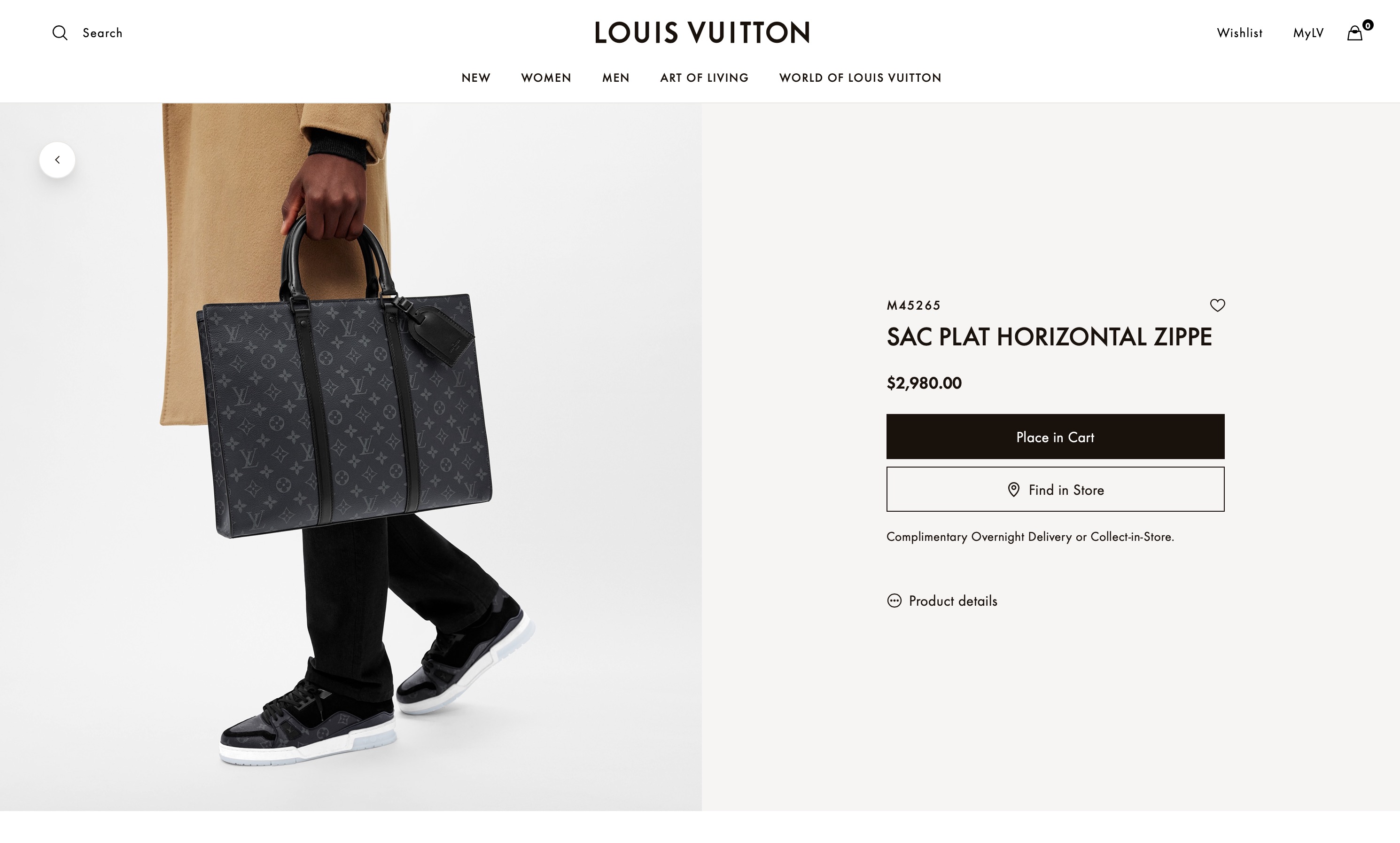
On the other hand, some shoppers (particularly big spenders) preferred to have subtle logos on their luxury goods — if any logo at all. They reported feeling this way for one or more of the following reasons:
- They felt that heavily branded items with noticeable logos were too “flashy” or “tacky” and not a “refined” approach to luxury.
- They had seen many fake, knockoff versions of the heavily branded items.
- They wanted to avoid being perceived as trying too hard or showing off, particularly around people who couldn’t afford those items.
- They wanted to avoid attracting “unwanted attention” from thieves. (Theft was a concern for these customers — one participant reported that she had had two Rolex watches stolen.)
For example, one big spender living in New York City told us:
“I would never get one of those big Louis Vuitton purses that everybody has. A lot of people here [New York City] have fake ones. What’s the point of having a nice luxury item when there are a ton of people wearing the fake version of it all around me? I usually try to get something that’s a bit more subtle and unique.”
She also told us that she rode the subway to work and worried about looking too flashy while she commuted.
“If I were to wear something very flashy that was completely covered in Gucci print, I would probably get stared at. I do use public transportation, which is a little bit dangerous. I wouldn’t want to have head-to-toe designer logos on. For one thing, I don’t want people on public transit feel insecure or uncomfortable because I can afford these things and they can’t. But also, I don’t want to be a target and get unwanted attention.”
(This shopper was excited when she found a reversible Burberry coat during her test session — simple black on one side, with the recognizable Burberry print on the other. She decided to buy the coat, because she could wear the simple fabric during her commute, but the recognizable print to other locations and events.)
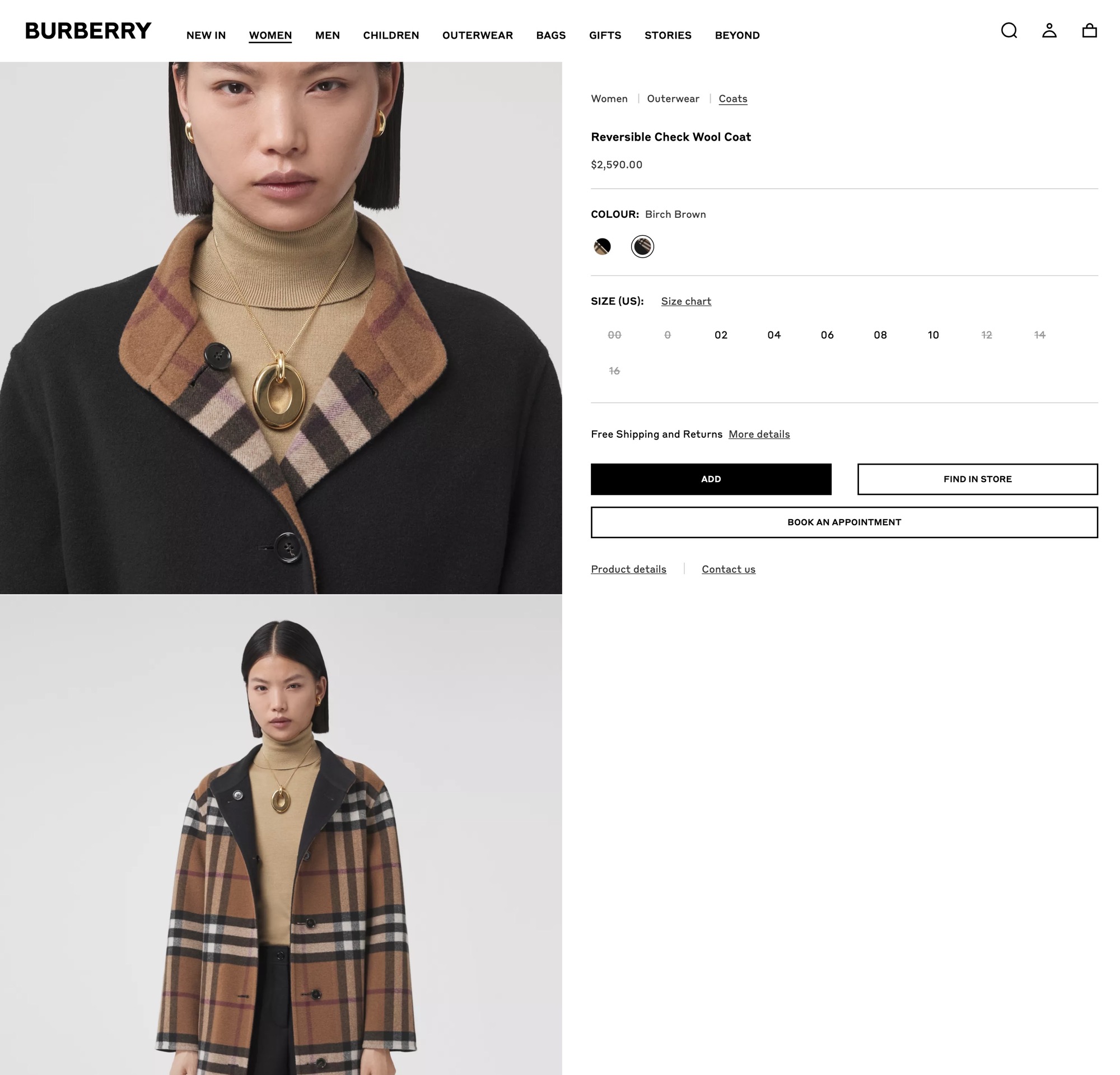
Another anxiety that appeared at this stage was maintaining the item. While luxury goods are typically perceived to be higher quality and longer lasting than less expensive versions, this isn’t always the case. The occasional splurger considering the Louis Vuitton briefcase told us:
“There are a million other bags that would be just as good — probably even more so. Is that leather any better than any other bag? Actually, it’s not. I’ve had LV products before, and they do fray. They don’t last forever. They do have a warranty, so you can send it back and have it repaired.”
The purchase of a luxury product is often just the beginning of a long-term relationship with that brand. Maintenance and warranty services are typically (though not always) included services for these high-end items. These services make luxury customers feel as those they’re buying membership in a club as much as the item itself, and they contribute to the long-term relationship with the brand.
“I’ve taken my Rolex watches and luxury jewelry pieces back into the stores for cleaning. I think that’s very good, it’s one of the values for these brands. They do treat you as a customer for life, and that’s factored into the initial purchase experience.”
Conclusion: Focus on the Consideration Phase
Our clearest takeaway from this research is that luxury brands’ sites and apps are most important during the consideration phase of their customers’ journey, when luxury shoppers research the products that they discovered. This phase is critical not only for big spenders and occasional splurgers, but also for window shoppers, who need an accessible way to explore the products they aspire to someday buy. Subpar digital experiences fall short of luxury shoppers’ expectations as they research potential purchases. Luxury brands should focus on better satisfying customer needs in this phase.
The third article in this series shares specific ways in which luxury brands can provide high-quality digital experiences that assist in the consideration phase, while complementing luxury values and principles.




